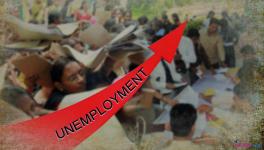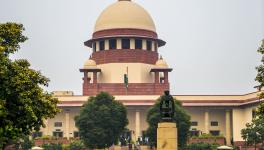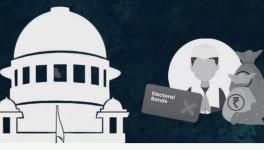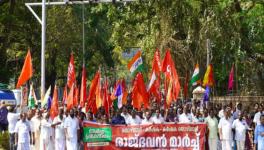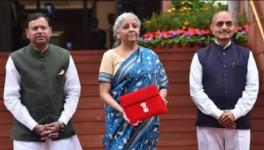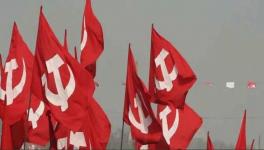Interim Budget: A Blast of Hot Air
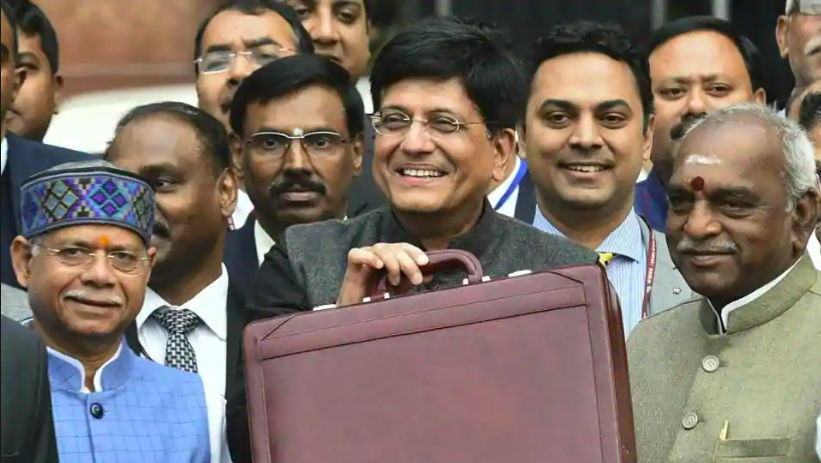
Time was when the annual budget of the Central government used to be a serious affair. It reflected no doubt the government’s class bias, but how exactly this class bias was expressed through the various budgetary proposals had to be established by scrutinising budgetary figures, which did signify something. There was always, of course some window-dressing, but only at the fringes; the core of the budget was a matter for serious scrutiny. Such is no longer the case under the Narendra Modi government. Little credence can now be attached even to the most significant budget proposals.
Consider the most striking proposal of the 2019-20 interim budget, namely, the provision of Rs.6,000 per household to all households with ownership holdings of two hectares or below. The very day after the stand-in Finance Minister Piyush Goyal had made this announcement in the budget, the actual Finance Minister Arun Jaitley stated that in 2019-20 itself the Centre would ask the state governments to share in the financing of this transfer, to the tune of 40% (to the Centre’s 60%). Clearly, if the Centre had actually arranged the funds for these transfers, then Jaitley would not have converted it to a de facto Centrally-Sponsored Scheme; his remark proves that the funds shown for this scheme in the budget are non-existent, that the budgetary figures are a sham.
This vacuity of figures holds for the revised estimates for 2018-19, too. Independent researchers have established that the Central Goods and Services Tax (CGST) collection for 2018-19 which is expected to be only Rs 5.04 lakh crore (Revised Estimate), a full Rs 1 lakh crore less than the budget estimates for 2018-19, would not even reach this figure. The collection for April-January is estimated to be Rs 3.77 lakh crore, and with an average monthly collection of Rs.37,635 crore, the total for the year as a whole would not cross Rs.4.52 lakh crore, which is a further Rs.52,000 crore less than the RE. Likewise, the final collections from corporate income tax, and from disinvestment of public sector equity, are likely to be way below even the RE figures for 2018-19.
Given the importance under a neo-liberal regime of showing to globalised finance capital that the fiscal deficit remains bounded (for otherwise it would panic and flee the country) the government has been resorting to all kinds of subterfuges: shifting its own borrowings (which would have boosted the fiscal deficit) onto the shoulders of public sector undertakings; drawing on the cash reserves of the Reserve Bank of India and other nationalised banks through increased dividend receipts from them; and so on. To be sure, the increase in the fiscal deficit is not reprehensible per se, as globalised finance and neo-liberal economists make it out to be, but two points have to be noted here: first, the serious shortfall in tax receipts should be a cause for concern and augurs ill for the future; and second, little credence can be placed on the budgetary figures.
The same exaggeration also characterises the estimated tax receipts in 2019-20. Corporate tax receipts which are shown to be Rs.6.71 lakh crore in 2018-19 (RE) and which are unlikely to reach even this figure, are shown in 2019-20 (BE) to increase to a massive Rs.7.6 lakh crore. Receipts from CGST, which are likely to reach only about Rs.4.52 lakh crore in 2018-19, are shown to increase to Rs.6.10 lakh crore in 2019-20 (BE).
Since the receipt side consists of a lot of hot air, the same naturally is true of the expenditure side. Of course, the 2019-20 budget quite unashamedly shows little concern for the poor. The MGNREGA (rural job guarantee scheme) allocation is less than that for 2018-19 by Rs.1,000 crore. Considering the fact that the 2018-19 allocation had already got exhausted by the end of the third quarter, and that too despite the well-known phenomenon that a good deal of demand for employment under MGNREGA does not get registered at all, the government’s allocating even less than in 2018-19 shows a total disregard for this scheme, and hence its millions of poor beneficiaries. Likewise, there are absolute cuts in allocations for schemes for Scheduled Castes and Scheduled Tribes.
What is more, even the cash transfer scheme for agricultural households has cut out the poorest from its ambit. Since the scheme covers only those who are land-owners (with “land” excluding “homestead land”), landless labourers are clearly out of its purview. And since it is ownership holdings to which the transfers are to be made (little is known about operational holdings anyway because of lack of information about tenancy, which is quite substantially “informal”), tenants are also out of its purview. Thus the poor in the agricultural sector, namely the labourers and the tenants, have been completely cut out of the cash transfer scheme. This callousness towards the poor has also been accompanied by reduced allocations in absolute terms even for the flagship programmes of the government, such as the Pradhan Mantri Awas Yojana, and Swachh Bharat Mission.
All these are cuts that already figure in the budget; the point to note, however, is something quite different. If receipts are exaggerated in the budget, then further cuts are inevitable even in the allocations that actually figure in the budget; and this would be the case notwithstanding all subterfuges involving PSU accounts that the government may resort to.
It is in this context that Jaitley’s remark that the Pradhan Mantri Kisan Samman Nidhi would have to be funded by state governments to the tune of 40% in 2019-20, assumes significance. It clearly suggests that the BJP-led National Democratic Alliance government will not continue with this programme in 2019-20 and spend the Rs.75,000 crore on it which is envisaged in the budget. It is a useful propaganda ploy before the elections; but, after the elections, if the NDA comes to power, then the programme will be abandoned, and the blame put on the state governments for their non-cooperation. The fact of agriculture being a subject in the State list of the Indian Constitution will be dragged in for good measure to justify the Central government’s unwillingness to unilaterally keep funding this programme.
The Rs.20,000 crore to be spent as cash transfers in the current financial year itself, i.e. before the elections, however, is on a different footing. Despite the shortage of resources owing to the shortfall in tax receipts compared with the 2018-19 BE, this additional expenditure, or a good part of it, is likely to be incurred. The question is: who are likely to be the beneficiaries? Land records in the country as a whole being abysmally poor, clearly the identification of who owns which land is almost impossible. The selection of beneficiaries, therefore, will be quite arbitrary, and the poor peasants, even if they happen to be land-owners, are likely to be further excluded, with the money going largely to influential farmers (or to BJP supporters) who are seen as being likely to influence the electoral outcome.
Such a denouement, together with the income tax concession in the budget, which exempts persons with up to Rs.5 lakh income per annum from paying any income tax, suggests that the BJP is attempting to win the support of the intermediate strata of the population while totally ignoring the poor. This assertion may appear to be contradicted by the pension scheme for unorganised workers which the budget has introduced. But this scheme not only does not cover the existing old people; not only does not provide pension amounting to half of the minimum wage, which has been a long-standing demand; but is actually contributory in nature.
A person who just turns 29 will have to pay Rs. 100 per month every month until the age of 60 in order to qualify for a pension of Rs.3,000 per month thereafter. But a male worker paying this amount would have contributed Rs.1,50,000 at 8% compound interest rate anyway when he reaches 60; and given the mean life expectancy of 65 for males, the pension he would draw thereafter for the remainder of his expected life would effectively be getting financed from his own savings. The government’s role in this contributory scheme is, therefore, virtually negligible; the unorganised sector workers are being basically asked to save for their own old age.
Governments, of course, do provide “sops” before elections. But what distinguishes the 2019-20 budget is not only that a government with a term that expires barely two months after the start of the new financial year has presented a full-fledged budget, which is un-Constitutional; but also that the figures in this budget are simply a lot of hot air. Barring some concessions for a thin stratum of the intermediate segment of the population, they are meant only to create electoral hype; they do not offer any succour to the people at large.
Get the latest reports & analysis with people's perspective on Protests, movements & deep analytical videos, discussions of the current affairs in your Telegram app. Subscribe to NewsClick's Telegram channel & get Real-Time updates on stories, as they get published on our website.










